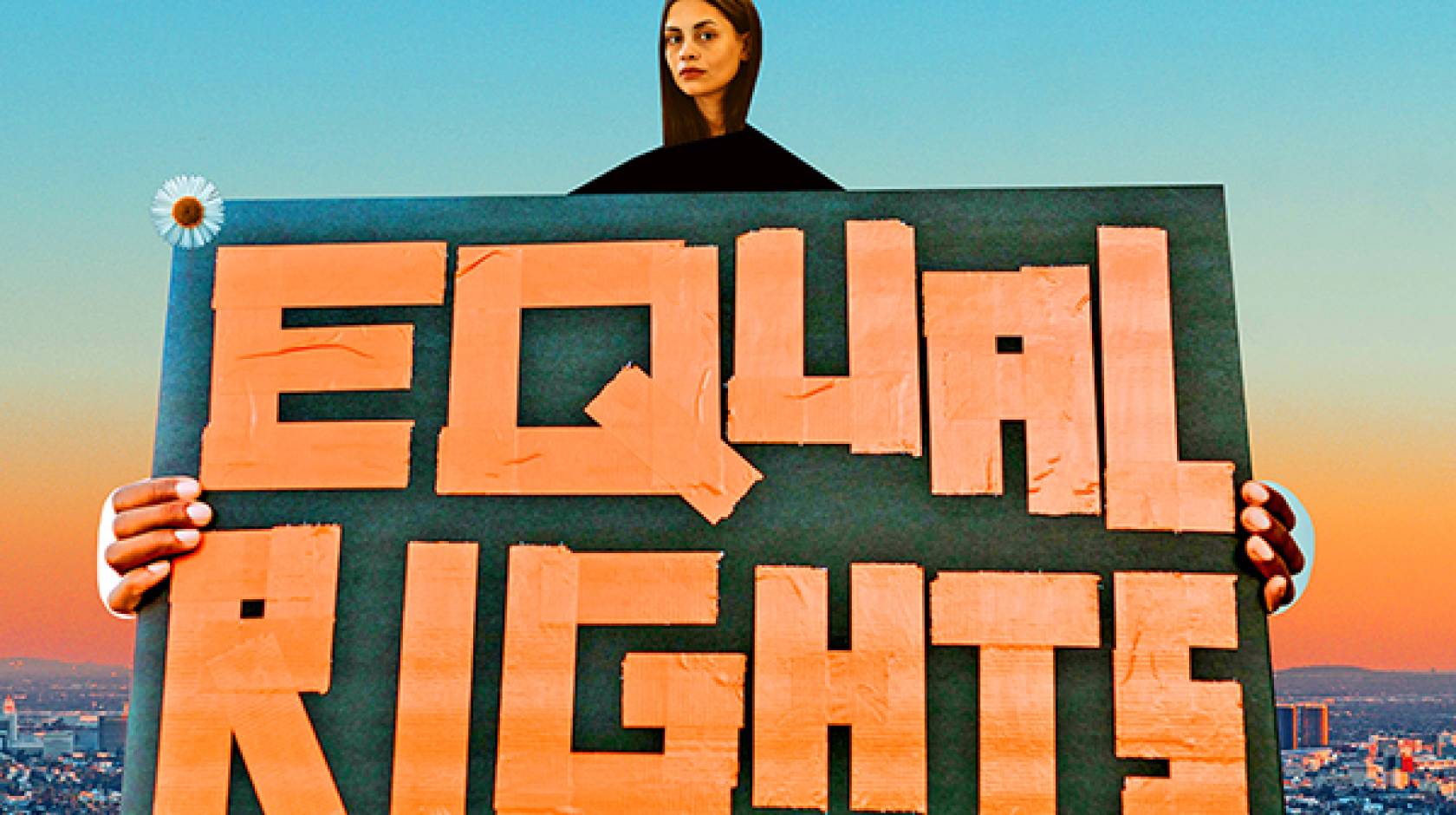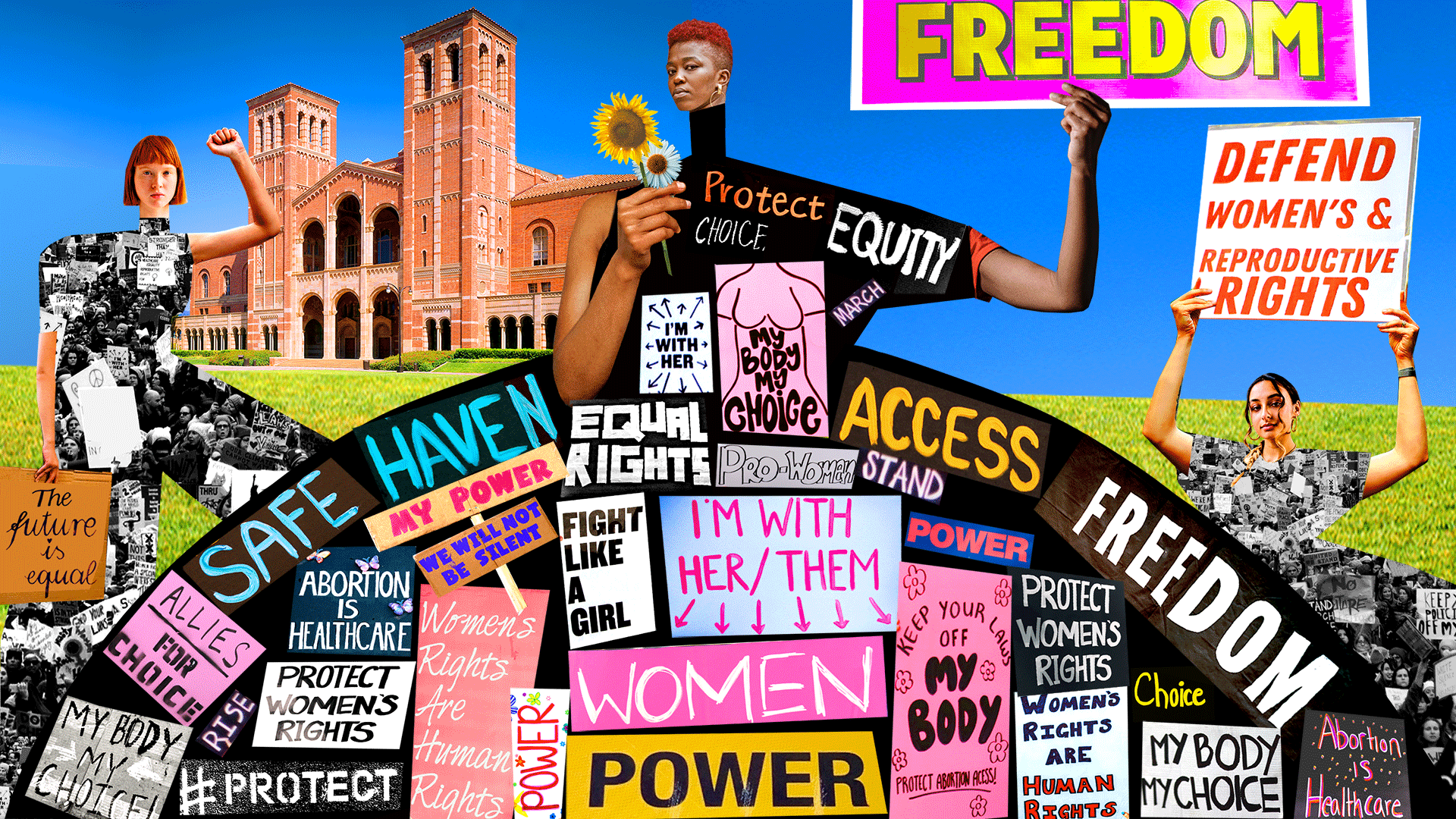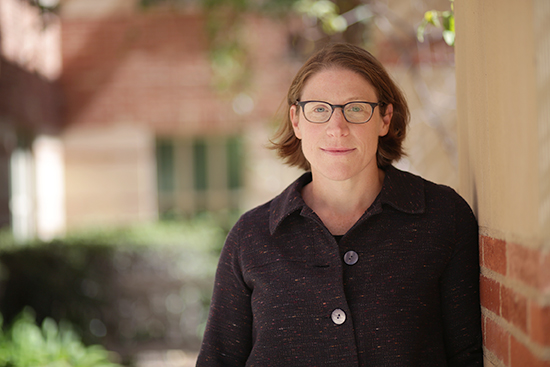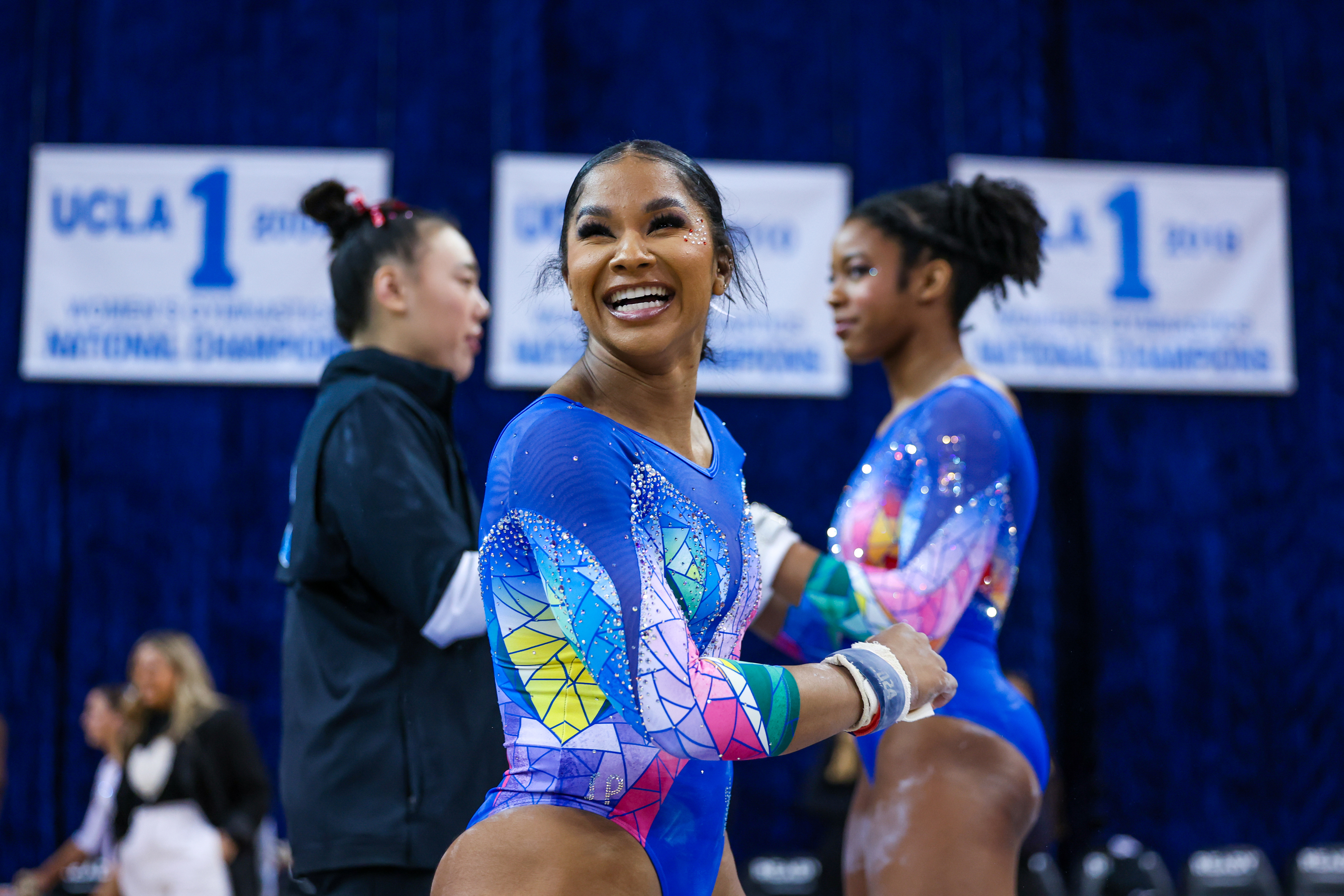Jim Newton, UCLA

Not since slavery has an issue so roiled the states.
On June 24, the U.S. Supreme Court reversed Roe v. Wade — and 50 years of its own precedents — when it handed down its decision in Dobbs v. Jackson. Since then, more than two dozen states have moved to outlaw or restrict abortion. But as some tack in that direction, others — notably California — have moved the other way, aggressively protecting abortion rights and launching a multifaceted campaign to protect them in the “post-Roe reversal era.” Two days after the court handed down Dobbs, Governor Gavin Newsom proclaimed that California “will continue to be a safe haven for all women seeking reproductive health care services.”
That announcement was no surprise. It also wasn’t a surprise that when Newsom and the state legislature needed a guardian to step in and forcefully protect reproductive freedom, they turned to UCLA.

In 2021, amid foreboding that the court would soon curtail abortion rights, Newsom included a $5 million budget allocation to the UCLA School of Law as part of the state’s commitment to providing abortion sanctuary in California. As Chancellor Gene Block said when Dobbs was announced, “Our university firmly supports individuals’ ability to access necessary health care services and make decisions about their own care in consultation with their medical teams.”
Los Angeles and UCLA were natural choices for the new Center on Reproductive Health, Law and Policy, which Sue Dunlap, president and CEO of Planned Parenthood Los Angeles, helped create. The city’s protective political climate, its numerous hospitals and medical schools and its position as a transportation hub with easy access from practically anywhere in the United States all make it a natural locus for women from other parts of the country seeking abortion care. Moreover, UCLA Law has a rich history of socially conscious clinics and programs that address sexual orientation, race studies, human rights and criminal justice. On top of that, the law school and broader campus have experience and familiarity with the fusion of research and policy — what Brad Sears, associate dean of public interest law at the law school, called “campuswide expertise.” Taken together, those factors made UCLA an attractive home for this effort.
The center’s mission reflects that commitment. It will, according to its statement of purpose, stand at the heart of the work to “protect, rebuild, and expand reproductive rights and justice in this country … training the next generation of reproductive justice lawyers and advocates, working with scholars and movement actors to generate innovative strategies to safeguard the health and well-being of people capable of pregnancy, and developing programs and initiatives to address the great challenges and pressing needs created by the Supreme Court’s decision in Dobbs.”
A new leader for a changing battlefield
If UCLA was a natural fit for the work of protecting abortion, so, too, was Cary Franklin, the university’s McDonald/Wright Professor of Law. Serious and forceful, she frames issues with the methodical precision of a law professor and champions rights with the determination of an advocate. She holds undergraduate and law degrees from Yale and a doctorate in philosophy from Oxford, where she was a Rhodes Scholar. A former clerk to Judge Sonia Sotomayor when the latter was serving on the U.S. Court of Appeals for the Second Circuit, Franklin spent a decade at the University of Texas, moving to UCLA two years ago to become faculty director of the Williams Institute, which works for the rights of LGBT people. She also took over the chief faculty position at the reproductive rights center. Franklin says one of the reasons she was drawn to Westwood is that “UCLA Law is such a leader in the fight to protect marginalized groups from discrimination.”

Franklin is widely published academically and, especially in the last year, has been sought out by media for her views on the state of abortion law in America. She was often consulted by reporters trying to understand and explain the significance of California’s Proposition 1, which appeared on the November ballot and enshrined abortion rights in the state’s constitution.
Named faculty director of the center in 2021, Franklin is now concentrating its efforts in two areas: (1) the development of new legal strategies to protect reproductive health in the absence of the guarantees once offered by Roe and its successor case, Casey v. Planned Parenthood (which the court also overturned in June); and (2) the provision of sanctuary to women who are expected to come to California seeking abortions prohibited by their home (read: red) states. The center, which has a budget of roughly $1.5 million a year, has set up offices in Westwood, sharing space with the Williams Institute. It has begun hiring staff, including a staff attorney and several postdoctoral fellows.
The state funding has allowed the center to begin its work. Going forward, Franklin said it will engage in fundraising to sustain itself. That money will support research, education and services, all part of the center’s broad mission to respond to attacks on laws that protect contraception, abortion and health care services. It is of a piece with UCLA Law School’s long tradition of combining education and advocacy.
Activists in the abortion-rights community see UCLA’s role as crucial. Creation of the center, they say, allows UCLA to perform its educational and community service roles on a matter of intense interest. Through it, says Dunlap, “students of the future [can] become the architects of what’s next.” Not only are particular questions of privacy, equal protection and federalism at stake, she says, but the basic issue of bodily autonomy and integrity are under specific and immediate threat. Rarely has the intersection of those issues — grand constitutional principles and personal questions of liberty — come as aggressively to the surface in the nation’s history as is the case right now.
For the center, one important priority is striking the correct balance between acting as a wellspring of advocacy and a home to dispassionate research. “We are not neutral on the question of reproductive freedom,” Franklin says. At the same time, she adds, the center and its scholarship are not dismissive of concerns about fetal life and hope to address child welfare more broadly. In the current debate, many states that are focused exclusively on closing health clinics where abortion is offered also are among the stingiest when it comes to support of child care, prenatal care and other programs that help children to be born and raised in healthy and protected environments. In the absence of any evident concern for babies and children, the actions of those states “start to look like sexual control,” Franklin says.
Dunlap agrees, adding that she doesn’t view the center at UCLA as replicating the work of Planned Parenthood, but rather hopes it will supply “intellectual rigor and debate” that will help move the conversation on reproductive health beyond just “pro-choice or anti-choice.”
How Dobbs will affect California
The practical effects of Dobbs began the minute the decision was handed down. In anticipation that Roe could someday be overturned, many states had adopted abortion restrictions that were automatically triggered by the ruling. In Alabama, Arkansas, Texas, Oklahoma, Tennessee, Kentucky, Missouri, Wisconsin, South Dakota and Louisiana, these so-called “trigger laws” instantly outlawed all abortions except in cases where the mother’s life was in danger; in a few others, such as Idaho and Mississippi, similar bans took effect, though with exceptions in cases where the fetus was the product of rape or incest.
California showed determination to chart a different course. Last November its voters approved Proposition 1, which adds an amendment to the state constitution that emphatically protects abortion rights. Its language unequivocally states that “the state shall not deny or interfere with an individual’s reproductive freedom in their most intimate decisions, which includes their fundamental right to choose to have an abortion and their fundamental right to choose or refuse contraceptives.”
Opponents argued that the language was so protective and expansive that it would prohibit any restrictions, including those on so-called “late-term” abortions. Franklin dismisses those arguments as “simply absurd.” No right is absolute, she told Politico last fall — the right to “liberty” does not mean that drivers can disregard speed limits; the right to own a gun doesn’t mean that states can’t prevent children from buying them. California voters clearly agreed, with 67 percent supporting the measure.
A predictable result of the split between the states is that many women will likely make their way to California from neighboring states that outlaw or restrict abortion. A June 2022 report produced by the center outlined what this could specifically mean for the Golden State. “Between 8,000 and 16,100 more people will travel to California each year for abortion care,” stated the report, written by Sears, Cathren Cohen ’14 and Lara Stemple, all of whom are affiliated with the center. “Of those, we estimate that between 4,700 and 9,400 will come to Los Angeles County.” The report also predicted that the influx will cross demographic lines and be concentrated among those who lack insurance and live in states without Medicaid expansion, making them especially vulnerable to new restrictions. Women 17 and younger are also likely to be disproportionately represented.
Many who come to California seeking abortions are expected to be from Arizona, Utah and Texas; smaller numbers are predicted to come from Idaho, Montana, Wyoming, Arkansas, Louisiana and Oklahoma. As these women arrive in California, they will come in need of care, and local providers are preparing to offer it. The report’s findings are already helping Los Angeles County and local providers brace for the impact.
The long road ahead
The influx of women in search of care is a reminder that Dobbs will not succeed in stopping abortions, but will only succeed in making them more difficult for desperate women to obtain. And it will disproportionately affect those who cannot easily take time off work or pay for travel. That naturally raises questions of equity. As Sears puts it, “Women with more resources will have more access.” And since poorer women are more likely to be women of color, state-by-state regulation of abortion will have racial implications as well. By focusing on those issues and alerting policymakers to their implications, the center can thus help ensure that equity issues are also addressed.
Several states have plunged ahead to restrict abortion access beyond their own borders, considering measures such as prohibiting travel for the purposes of obtaining an abortion; prohibiting the use of the mail for ordering “morning-after” pills; and devising civil penalties for companies that assist employees seeking abortions. It’s already having a chilling effect: in March, Walgreens announced it will not distribute abortion medication in 20 states whose attorneys general object. The severity of these clampdowns and the ingenuity of attorneys general and other officials opens up whole new dimensions in the legal landscape. In a word, they are frightening in the scope of personal liberty. “Some of these early approaches,” Dunlap says, “go way beyond the bounds of what we think of as a free and fair society.”
Advocates, aided by the center’s work, can be expected to mount challenges to such aggressive attempts to curb abortion. “All the polling shows that Americans do not want to live in this kind of surveillance state,” Franklin says. “The Supreme Court and these AGs have gotten very far away from where the public is.”
Indeed, polling suggests that a solid majority of Americans, even in red states, oppose absolute abortion bans. And early tests of Dobbs indicate that it is not merely unpopular, but galvanizing Democratic strength and bolstering support for abortion rights — something that popped up in exit polling during the Democrats’ surprising performance in the 2022 midterm elections. And it’s worth remembering that in strongly Republican Kansas, a measure asserting that the state’s constitution did not protect abortion was rejected by voters by a margin of nearly 20 points.
That’s probably not what the majority of Supreme Court justices who decided the Dobbs case had in mind when they attempted to wash their hands of abortion and hand the issue back to the “people’s representatives.” It’s a reminder that, far from ridding itself of this issue, the Court instead has opened up whole new areas for legal combat, including new efforts to ground abortion in constitutional principles other than privacy.
That’s hardly a new idea. By hinging the right to an abortion on privacy, which is not explicitly mentioned in the Constitution, Roe invited a certain fundamentalist skepticism in legal circles. Moreover, by attaching the right to fetal “viability,” Roe was also vulnerable to changes in medical science. Now, with Roe gone, scholars have a chance to tackle those questions anew.
Do these represent a possible positive result of the Dobbs decision? Franklin demurs. “I would not describe anything in connection with this as positive,” she says, adding that the suffering that Dobbs will inflict is too broad and deep to allow it to be considered anything but tragic. Nevertheless, she does allow that advocates and scholars, herself included, are now suddenly open to a range of options that seemed unnecessary to pursue as long as Roe was in place.
Advocates are already debating whether a constitutional protection for abortion could be found — for instance, in principles such as equity or equal protection. The 14th Amendment provides that residents of all states are entitled to the “equal protection” of the laws, but that principle seems challenged by the reality of abortion today in the United States, since a woman in California clearly enjoys different protections than one in, say, Idaho. “Imagining and rethinking the legal strategy” created by these new conditions, Franklin says, will be among the priorities of the center.
When it comes to reproductive freedom, the road ahead is destined to be as long as the one behind it. Indeed, after 50 years of both reliance on Roe, and of opposition to it, in some ways it now feels as though the national conversation is starting over. The debate is sure to be complicated and contentious; no permanent resolution is likely. But the Center on Reproductive Health, Law and Policy will almost certainly help to guide it beyond where it rests today — and, eventually, to a more solid foundation.
“Equality and liberty,” Franklin says, “will win out in the end.”

